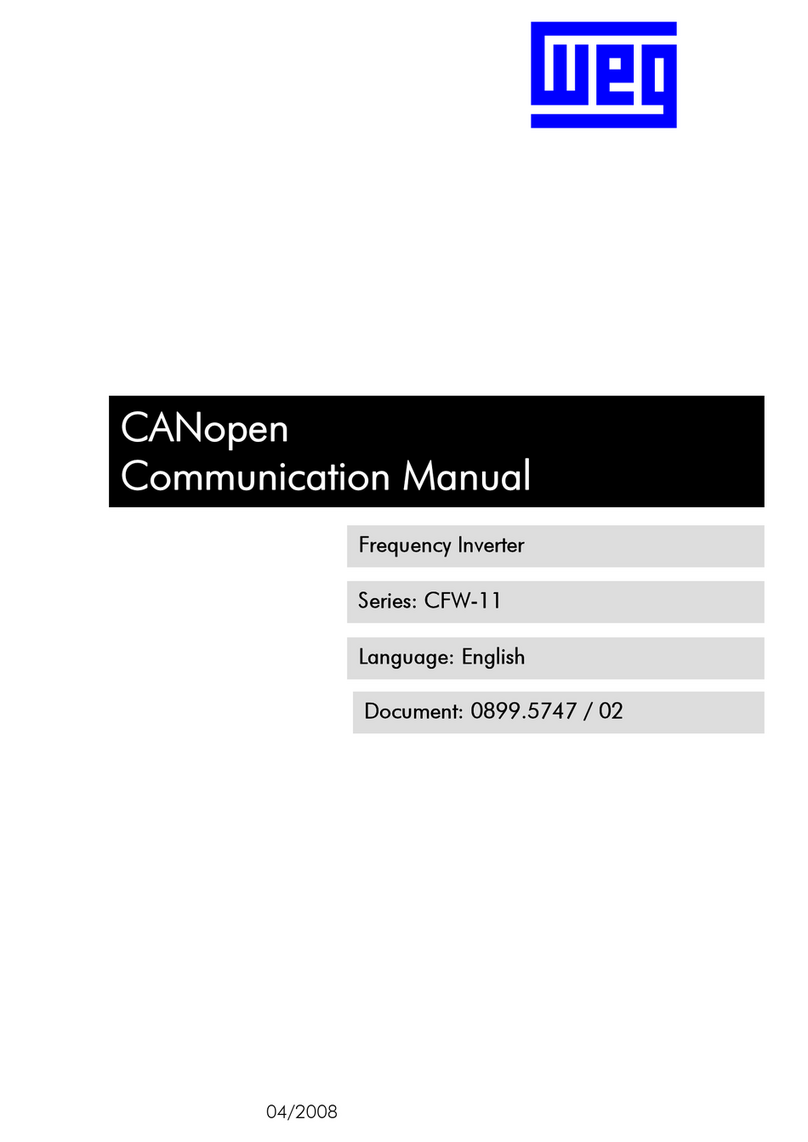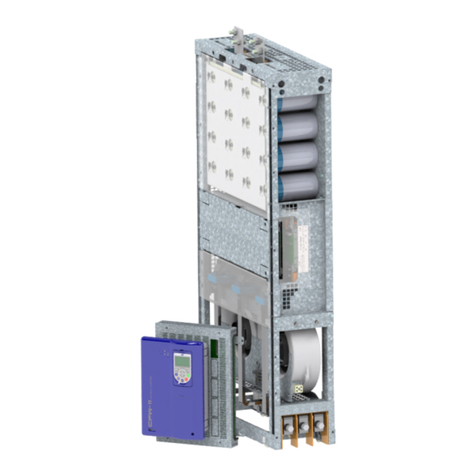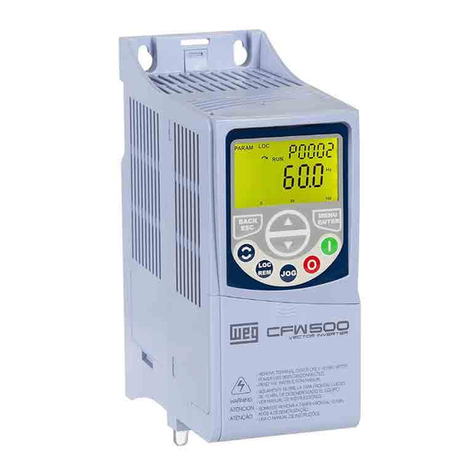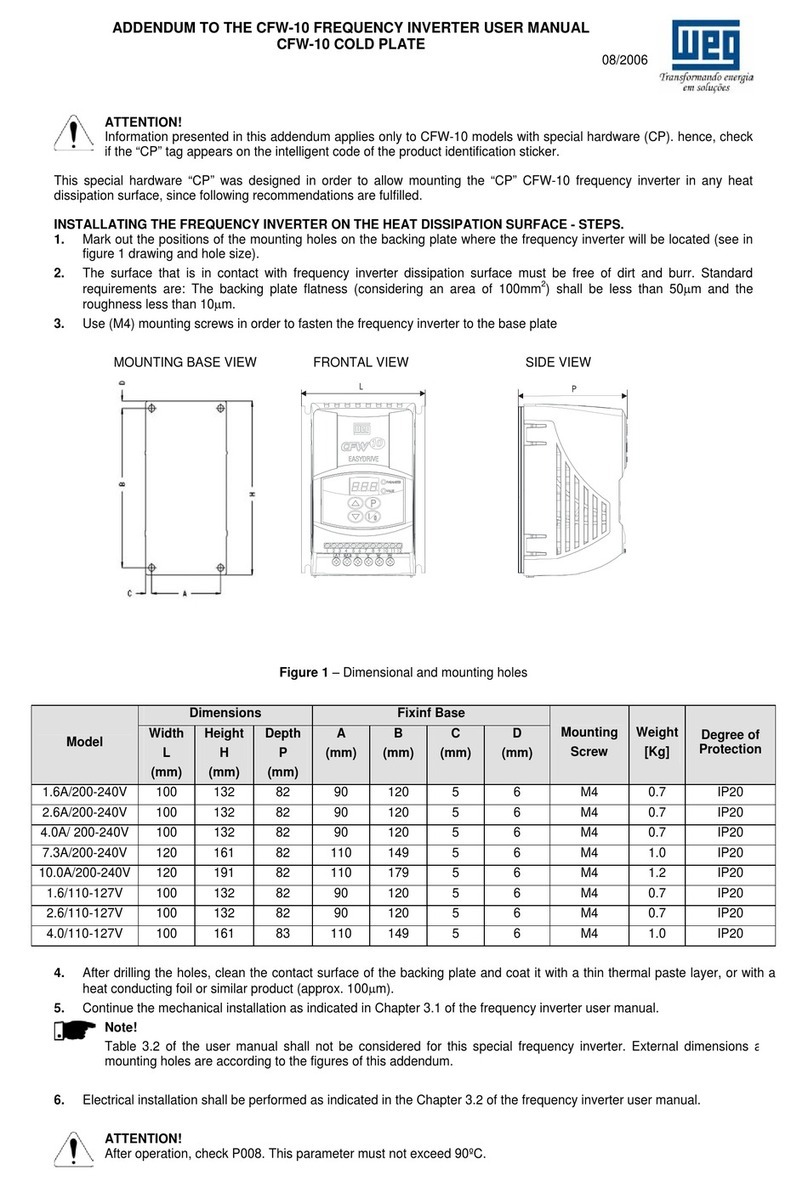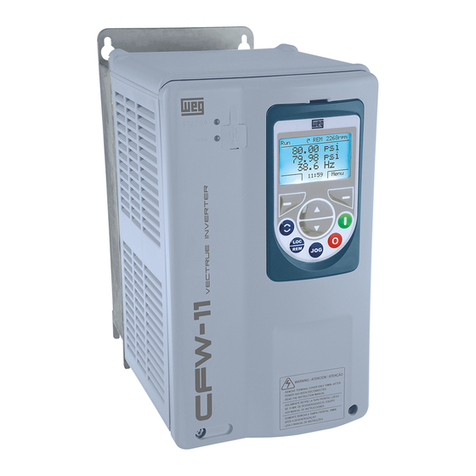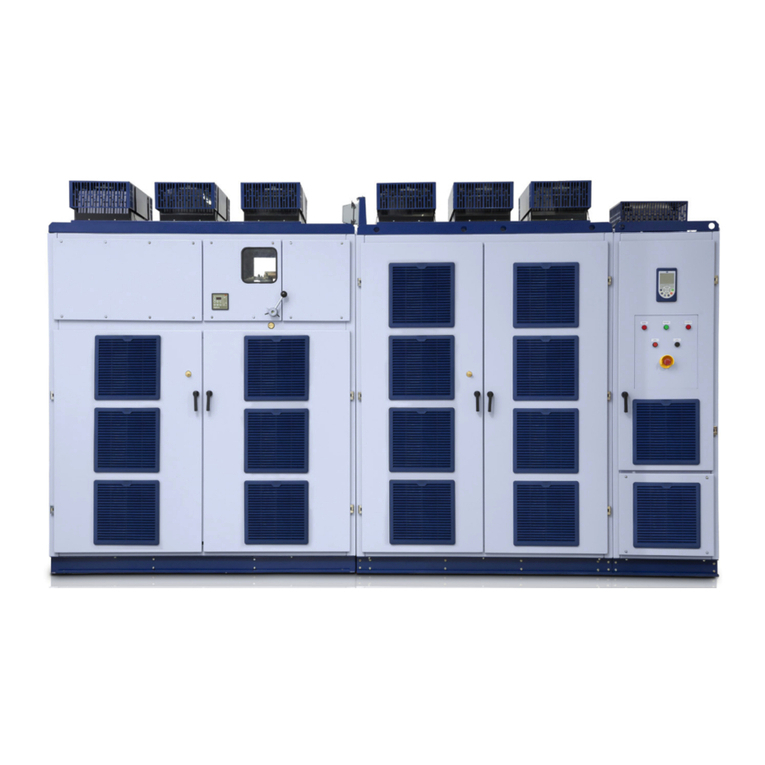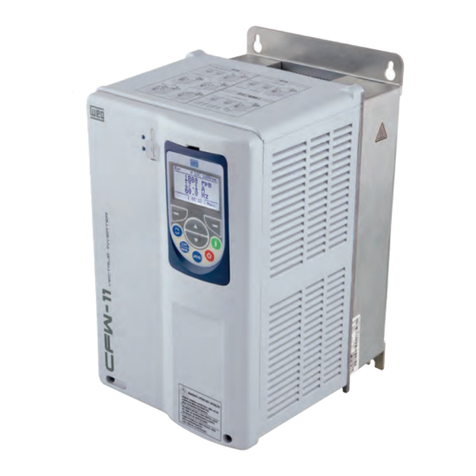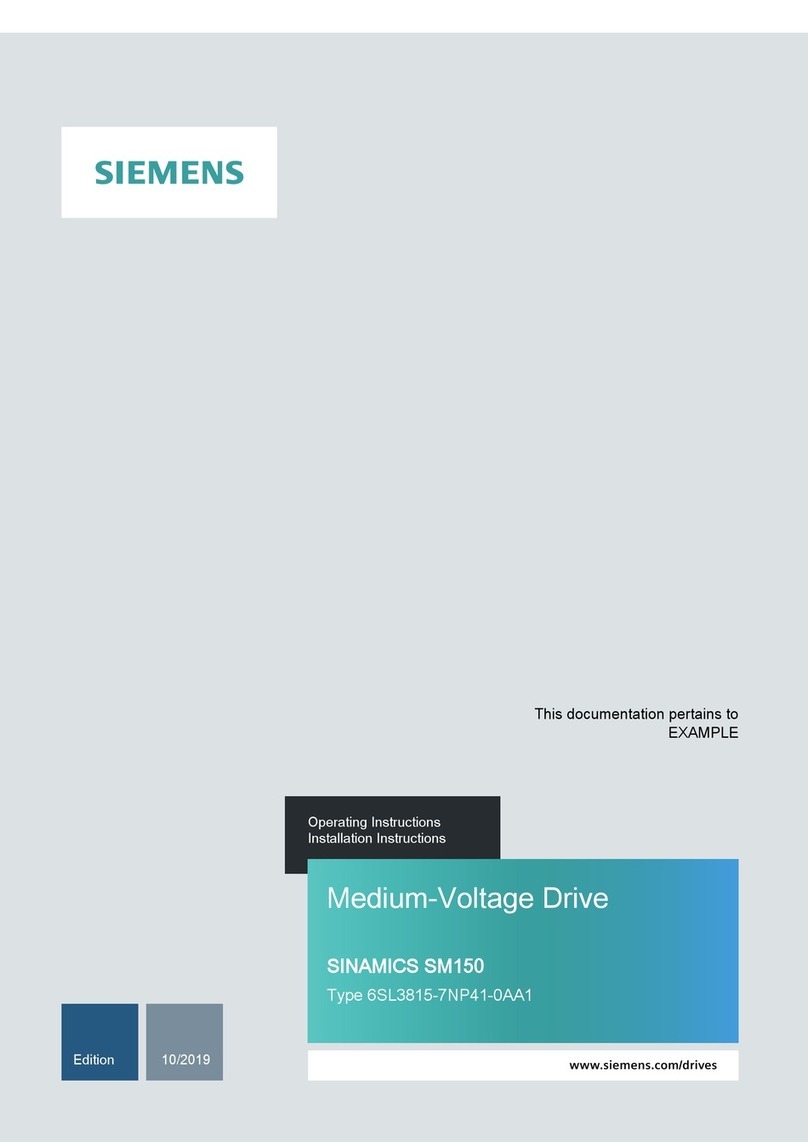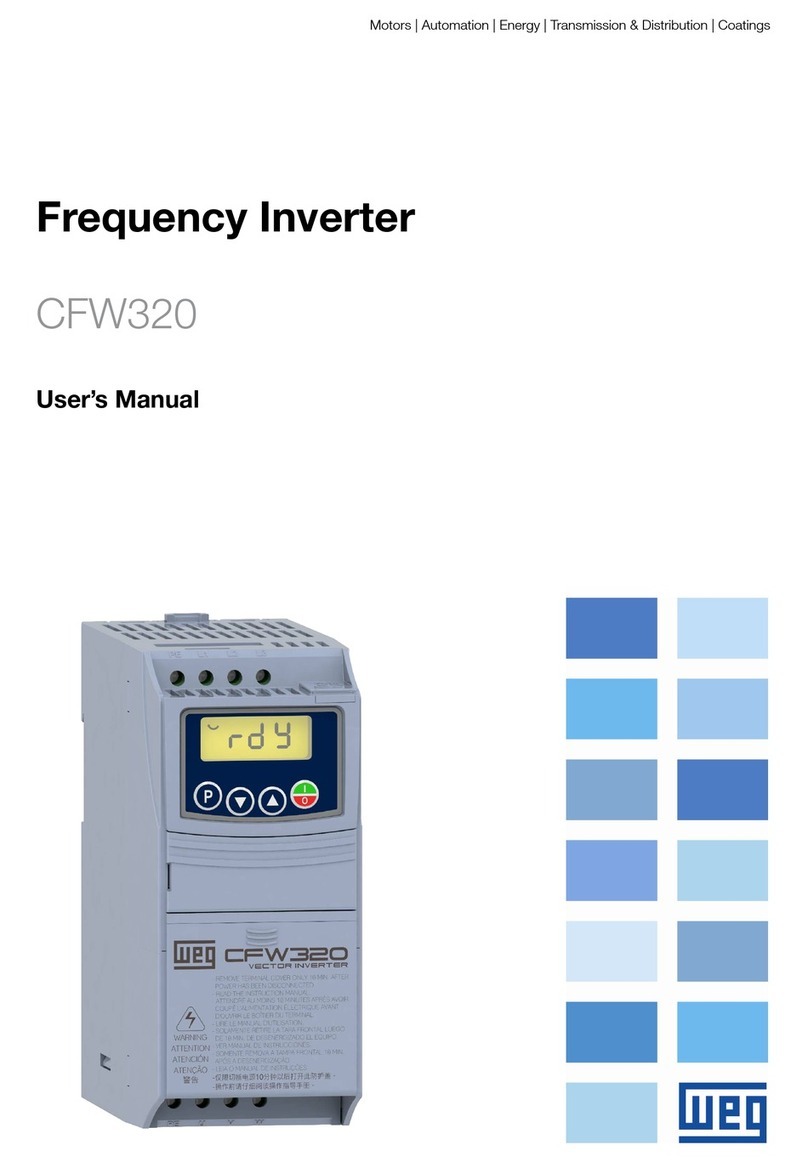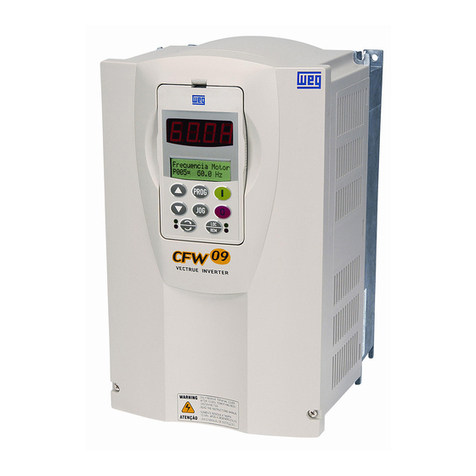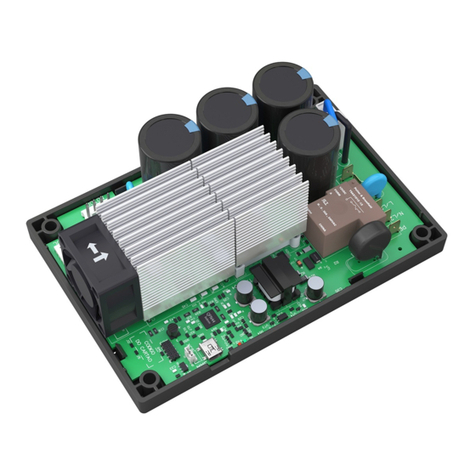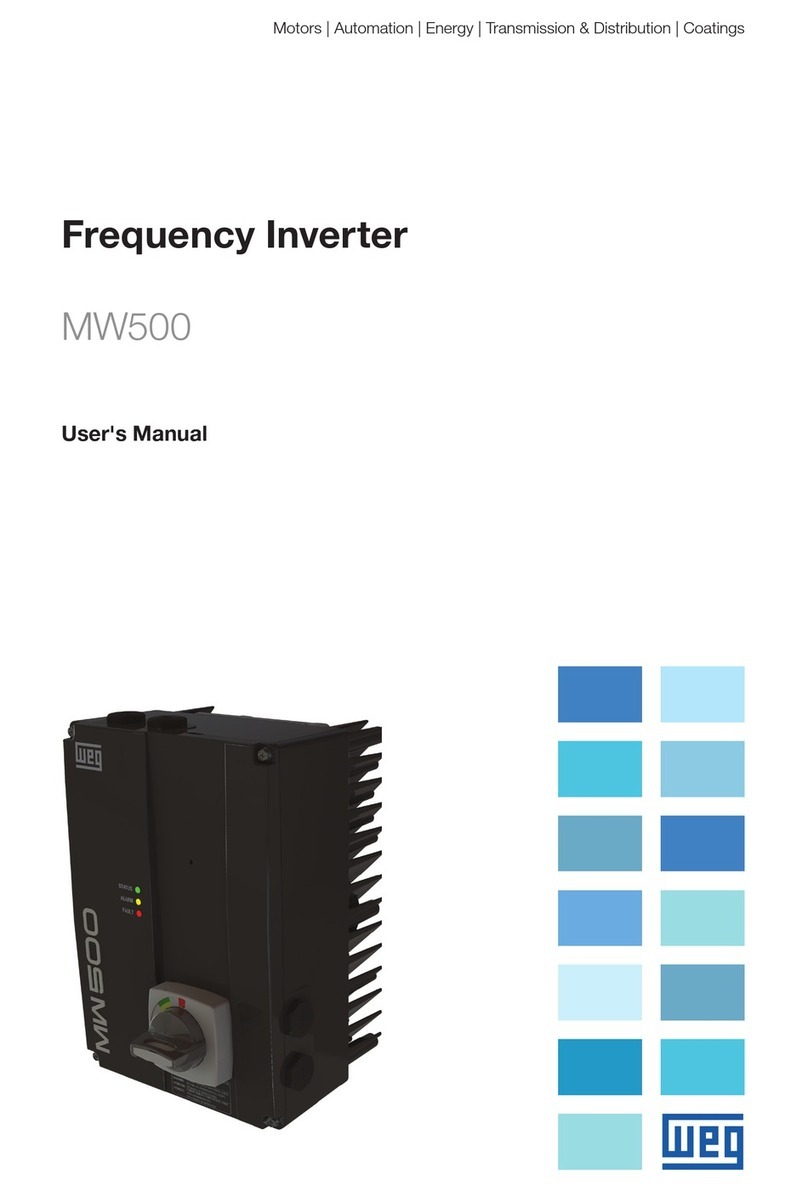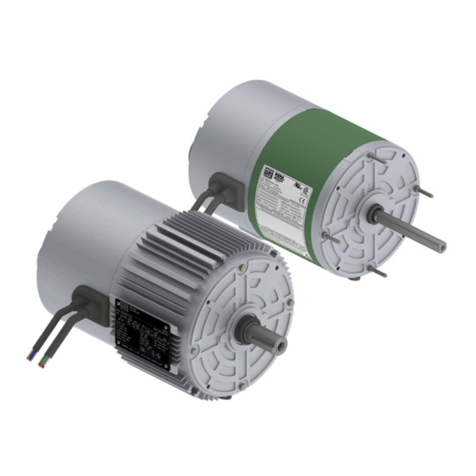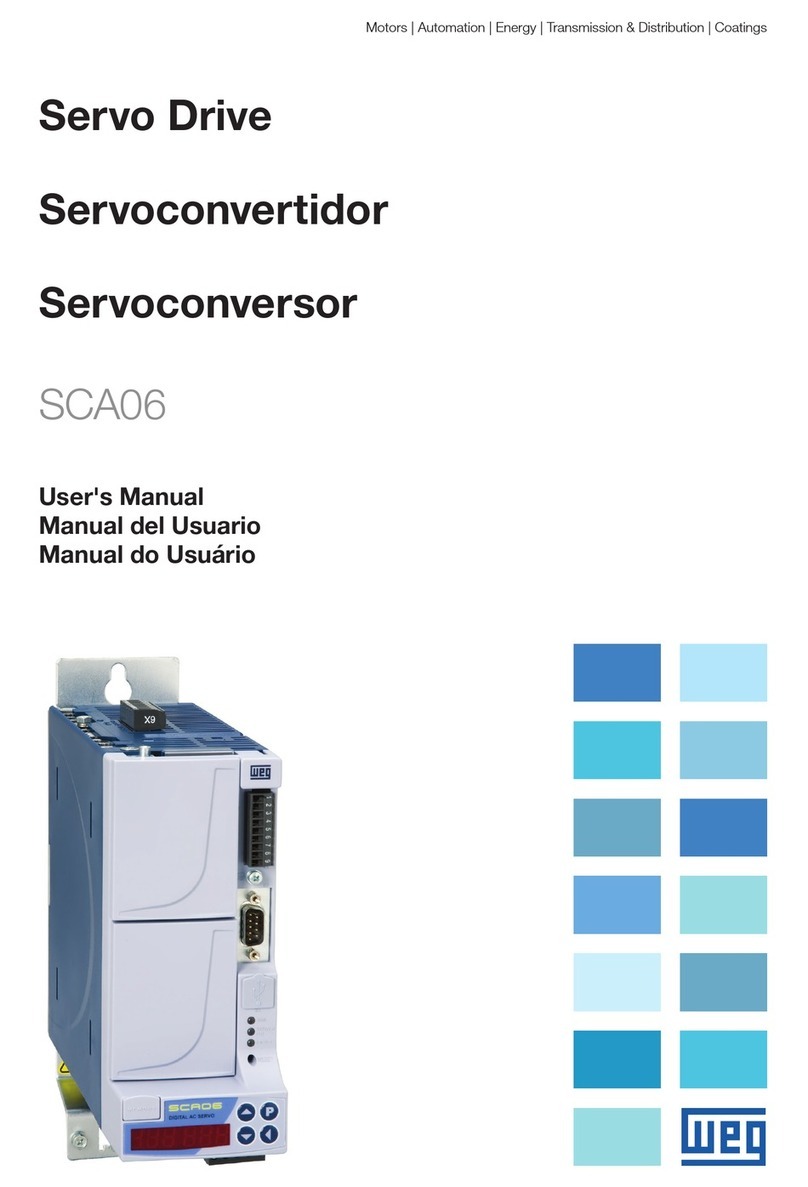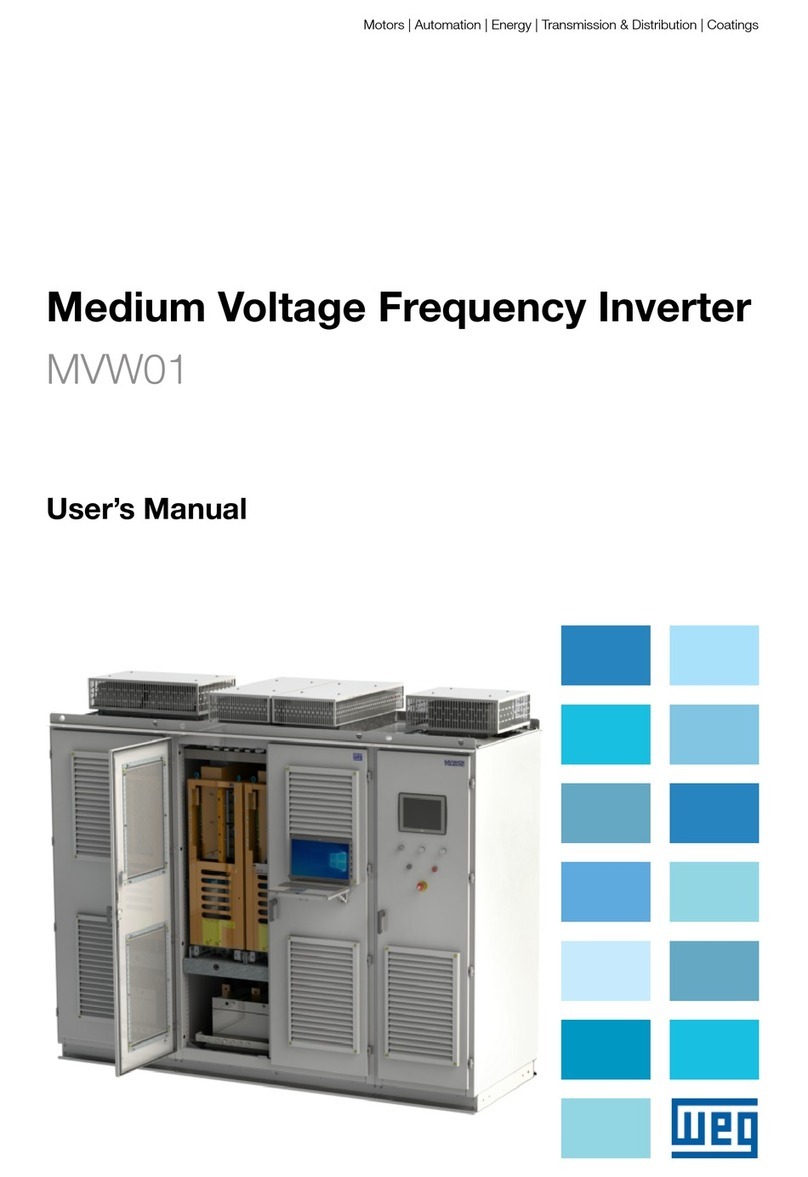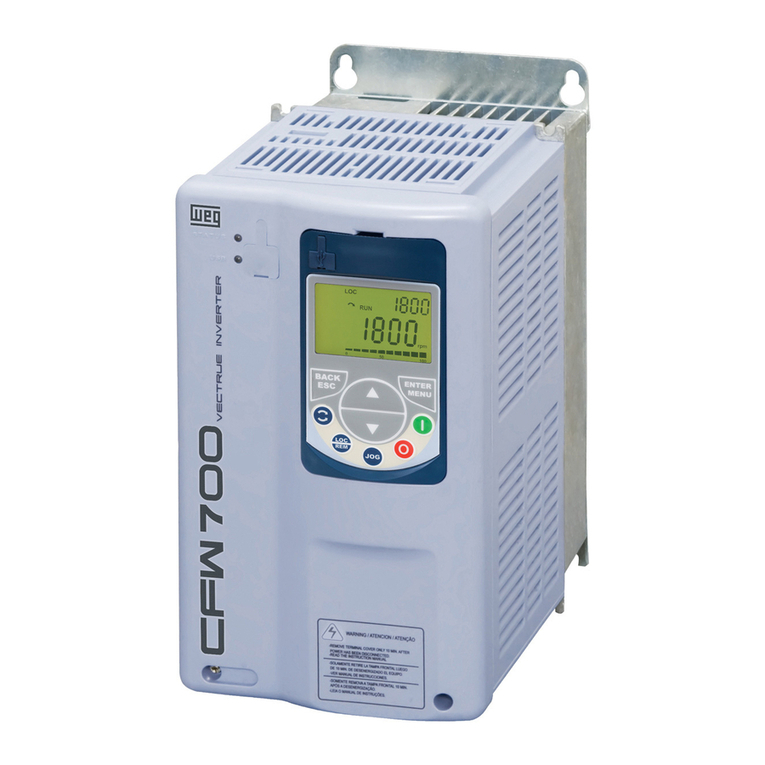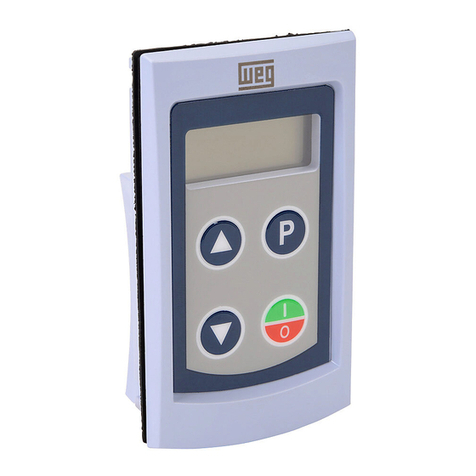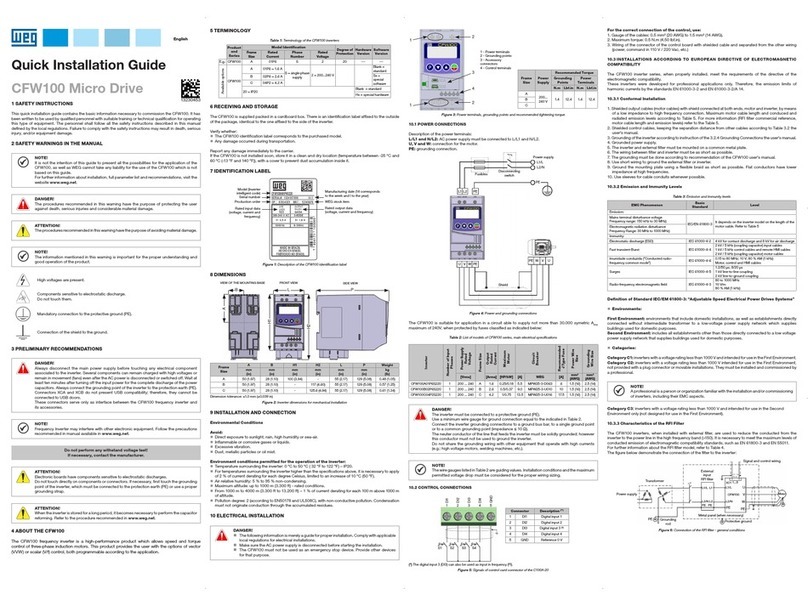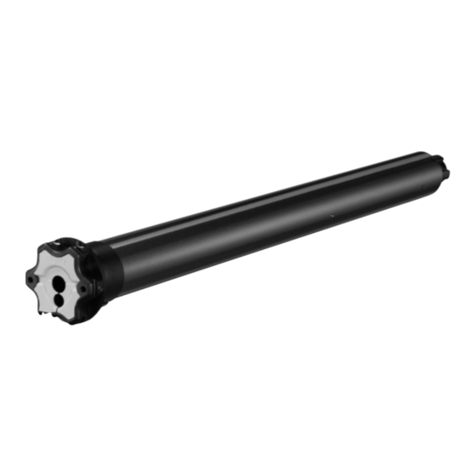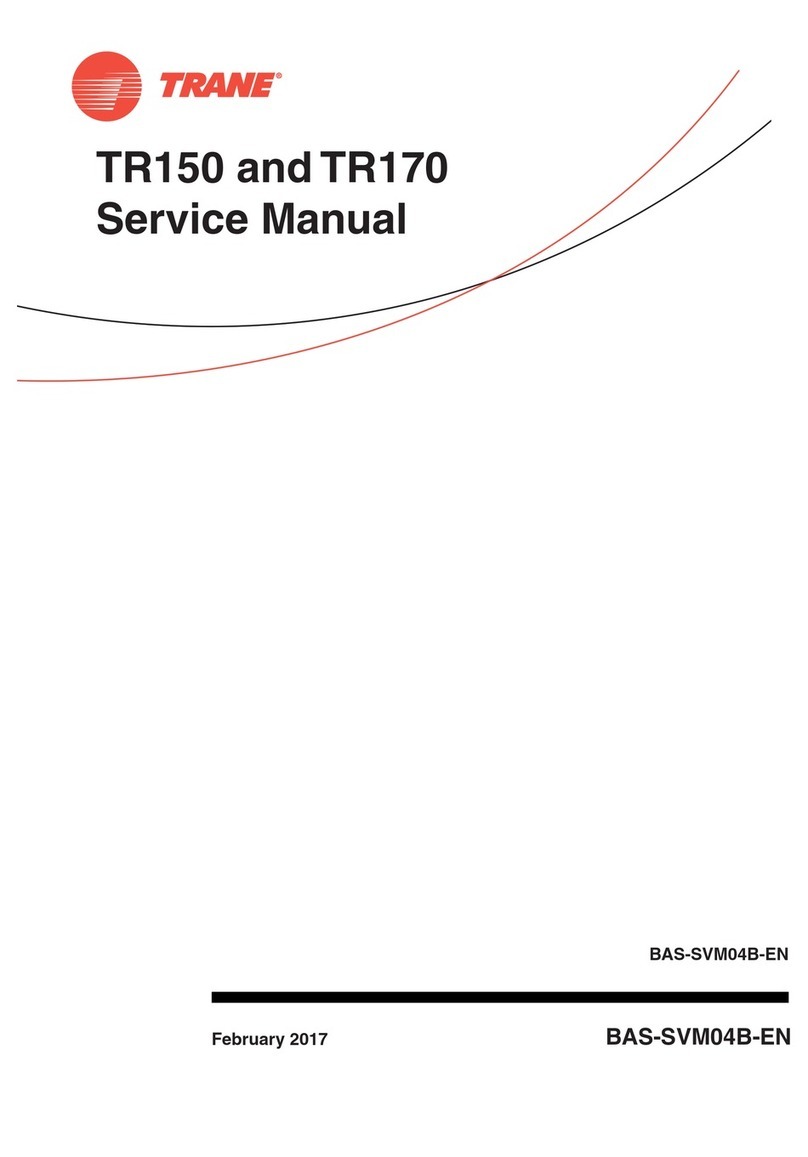
MAIN CHARACTERISTICS
1 MAIN CHARACTERISTICS
Below are the main characteristics for Modbus RTU communication of the frequency inverter CFW320.
Interface galvanically insulated and with differential signal, providing more robustness against electromagnetic
interference.
It allows the device to operate as Modbus RTU slave.
Allows data communication for equipment operation and parameterization.
1.1 MODBUS RTU
Two transmission modes are defined in the Modbus protocol specification for the serial interface: ASCII and RTU.
These modes define the way the message bytes are transmitted. It is not possible to use the two transmission
modes in the same network. The CFW320 frequency inverter uses only the RTU mode for the telegram transmission.
It allows up to 247 slaves, but only one master.
It adds to the Modbus PDU an address and error-checking field. The association of these fields to the PDU is called
ADU (Application Data Unit).
Modbus RTU telegram format:
Address: used to identify the slave.
PDU: Modbus PDU.
CRC: field for checking the transmission errors.
The master initiates the communication sending a byte with the address of the slave to which the message is
destined. When sending the answer, the slave also initiates the telegram with its own address. The master can also
send a message to the address 0 (zero), which means that the message is destined to all the slaves in the network
(broadcast). In that case, no slave will answer to the master.
The last part of the telegram is the field for checking the transmission errors. The used method is the CRC-16
(Cycling Redundancy Check). This field is formed by two bytes; where first the least significant byte is transmitted
(CRC-), and then the most significant (CRC+). The CRC calculation form is described in the protocol specification.
In the RTU mode there is no specific character that indicates the beginning or the end of a telegram. The indication
of when a new message begins or when it ends is done by the absence of data transmission in the network,
for a minimum period of 3.5 times the transmission time of a data byte (11 bits). Thus, in case a telegram has
initiated after the elapsing of this minimum time, the network elements will assume that the first received character
represents the beginning of a new telegram. And in the same manner, the network elements will assume that the
telegram has reached its end when after receiving the telegram elements, this time has elapsed again.
If during the transmission of a telegram the time between the bytes is longer than this minimum time, the telegram
will be considered invalid because the frequency inverter will discard the bytes already received and will mount a
new telegram with the bytes that were being transmitted.
For communication rates higher than 19200 bit/s, the used times are the same as for that rate. The Table 1.1 on
page 6 shows us the times for different communication transmission rates:
Table 1.1: Communication rates and the time periods involved in the telegram transmission
Baud rate T11bits T3.5x
1200 bits/s 9.167 ms 32.083 ms
2400 bits/s 4.583 ms 16.042 ms
4800 bits/s 2.292 ms 8.021 ms
9600 bits/s 1.146 ms 4.010 ms
19200 bits/s 573 µs 2.005 ms
38400 bits/s 573 µs 2.005 ms
57600 bits/s 573 µs 2.005 ms
T11bits = Time for transmitting one byte of the telegram.
T3.5x= Minimum interval to indicated beginning and end of a telegram (3.5 x T11bits).
CFW320 | 6
